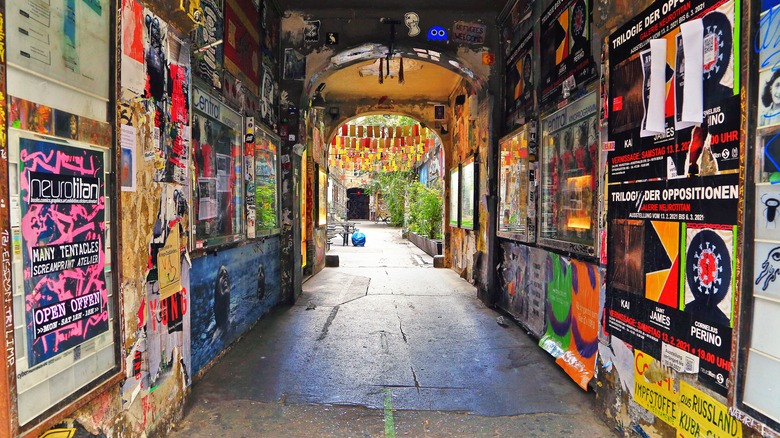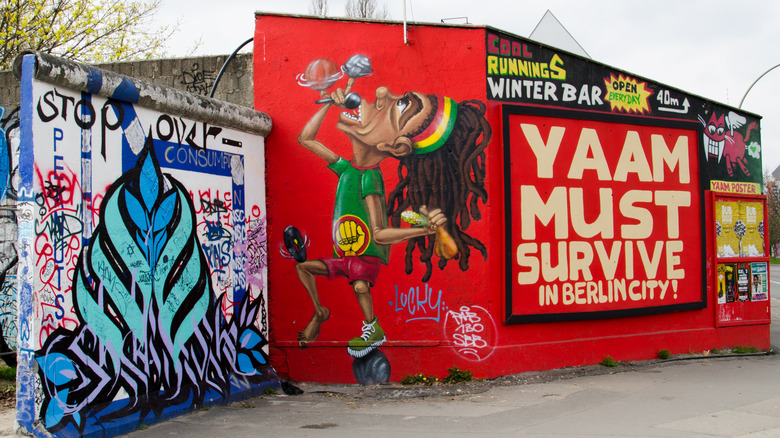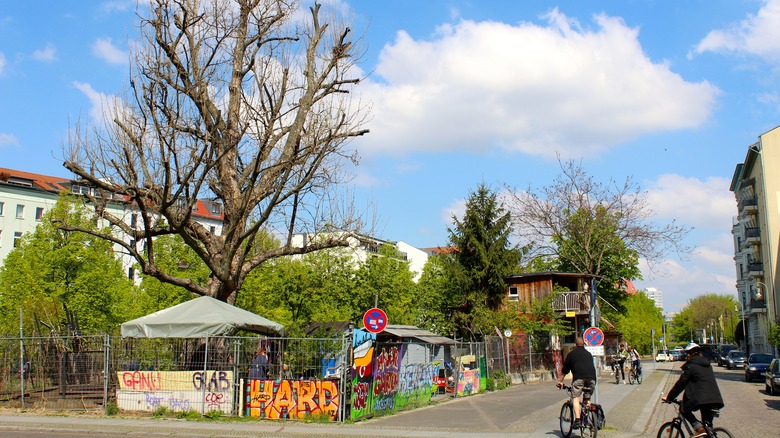The Free Walking Tour That Offers You An Inside Look At Berlin's Alternative Side
From its eclectic music and art scene to its squatter culture and bohemian attitude, Berlin has seemed to defy Europe's — if not the world's — conventions. International transplants from all over the world now call Berlin home, beckoned by its artistic spirit and alternative worldview. And it's easy to follow the timeline leading to Berlin's modern expression.
Before the Berlin Wall fell in 1989, the division in Berlin was geographical, political, and cultural. While West Berlin enjoyed the freedom of democratic ideals and liberties shared with the Allied Nations of the West, East Berlin remained under Soviet control, per post-World War II agreements. So, while West Berlin could be considered relatively free, the Berlin Wall remained a physical and political manifestation of Berlin suppression.
During the late 1970s and '80s, a growing political and cultural subculture began to grow within urban districts of West Berlin, per Deutsche Welle. Spurred by a wave of punk music, rave culture, political unrest, and subversive artistic expression, Berlin's underground counter-culture gained traction. When the Berlin Wall fell, this West Berlin movement spread into the "gray zone" of abandoned buildings in East Berlin, giving birth to a squatter movement and transforming these buildings into artistic incubators.
Today, in the spirit of Berlin's underground, you can take a free alternative tour of these storied and vibrant areas. Whether you're a history buff, art enthusiast, or cultural anthropologist, these alternative tours offer a fascinating deep dive into modern Berlin.
Berlin's international art scene
It's impossible to mention Berlin's underground scene without including the city's street art. Fortunately, on your Berlin tour, you'll probably take a stroll through the chaotically mesmerizing Haus Schwarzenberg Street Art Alley. Located near the famous Hackescher Markt, this easy-to-miss alley is a hotspot for Berlin's street art scene. Many famous street artists have created renowned pieces on the concrete canvas, though the urban collage evolves quickly.
You may also visit Künstlerhaus Bethanien, which is a prime example of Berlin transforming urban abandonment into artistic renewal. After narrowly avoiding demolition, the former hospital is now a cultural arts center that hosts artists-in-residence from all over the world, per its website, while showcasing contemporary art exhibits and galleries.
To understand the international appeal of Berlin, you may also visit YAAM Beach. Short for the Young and African Arts Market, per Visit Berlin, YAAM Beach has become a multicultural gathering point for both Berliners and international visitors. Here, you can peruse the African art market, attend a Reggae concert, or simply relax to good vibes. And yeah, spread across the sand by the Spree River, the bar and art market is an intercity (and irie) beach of sorts.
Berlin subversion and reunification
One of the most compelling attractions you may visit during your tour is the "Baumhaus an der Mauer," or the Treehouse on the Wall. Per Yahoo News, the treehouse was built by a Turkish immigrant in the 1980s using scrap metal. Built between two trees and featuring a small garden, the two-story home was built in the middle of "no man's land," which ran between West and East Berlin.
Since both sides contested the area and the Berlin Wall's route created a small, unused parcel of land, Osman Kalin built the treehouse seemingly unconcerned by the tense atmosphere and guards, even turning the surrounding green space into a vegetable garden.
Over time, the treehouse began to be viewed as resistance to the Cold War and a symbol of reunification. And on the free alternative tour, the Treehouse on the Wall is an appropriate stop. The treehouse (and story) represents a subversive act that threatened conventions in Berlin for the better.
While the alternative Berlin tour is free, remember that free tours are tip-based, so make sure you express your gratitude. Without a knowledgeable guide, you wouldn't receive a real ticket to Berlin's fascinating underground.


